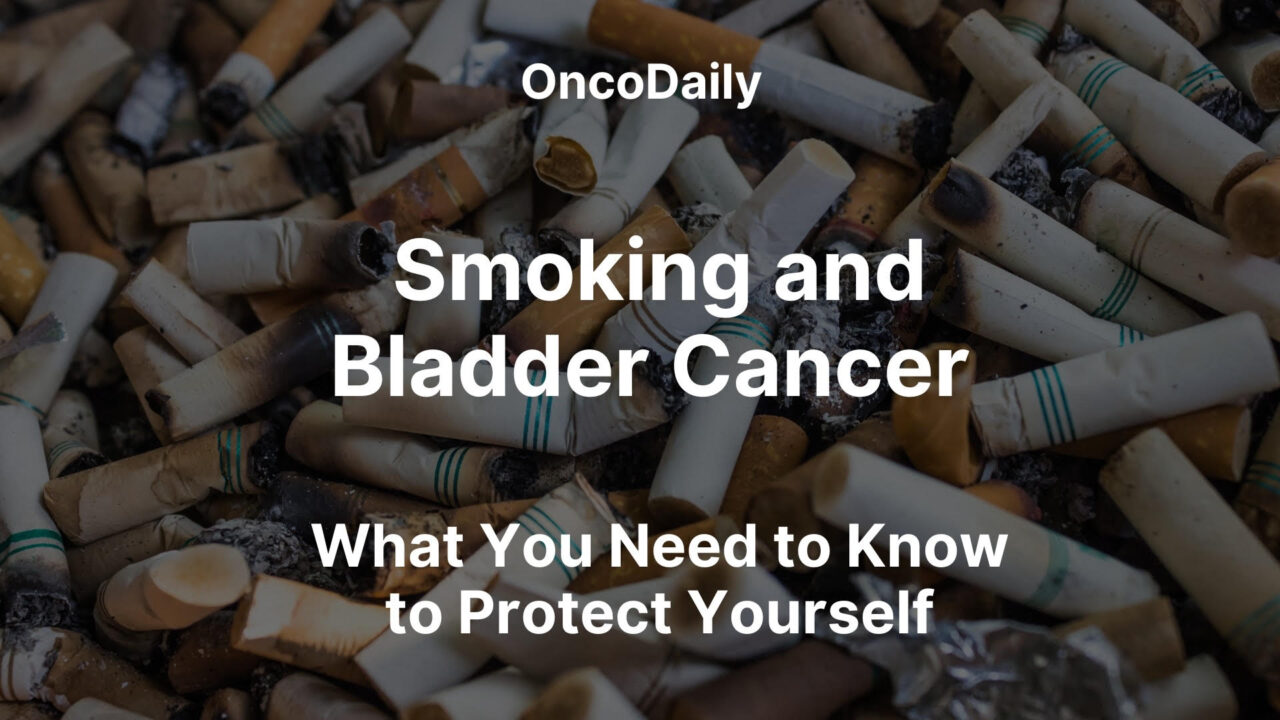
Smoking and Bladder Cancer: What You Need to Know to Protect Yourself
Tobacco use remains one of the world’s most devastating public health threats, claiming more than 8 million lives every year—over 7 million from direct use and around 1.3 million from exposure to secondhand smoke. Despite decades of health warnings, nearly half of all tobacco users will die from a smoking-related disease if current trends continue. This article explores what tobacco and cigarette smoke are made of, how nicotine affects the body, and the mechanisms linking smoking and bladder cancer as well as other cancers. We will examine the deep cultural roots of smoking, the science behind its health impacts, and the staggering global statistics that underscore the risks of smoking and bladder cancer.
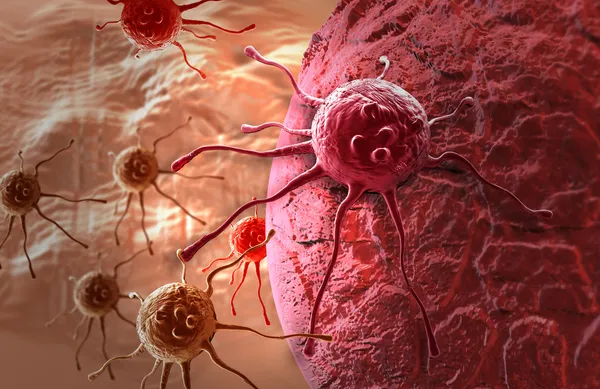
We’ll also examine which organs are most at risk, debunk common myths, and offer practical advice for those seeking a healthier lifestyle. Finally, we highlight the significance of World No Tobacco Day and global efforts to combat the tobacco epidemic. WHO 2024.
Why is Smoking So Damaging?
Tobacco products contain a complex mixture of natural plant chemicals, agricultural chemicals, and compounds formed during processing, many of which are toxic and carcinogenic. Even products labeled as “natural” or “additive-free” contain harmful substances.
These chemicals enter tobacco products through multiple routes:
- Naturally occurring in the tobacco plant: Tobacco plants produce biological chemicals such as nicotine (the main addictive substance), polyphenols (which affect flavor), and toxic metals absorbed from the soil.
- Added during cultivation: Fertilizers and pesticides contribute chemicals including nitrates, phosphates, and toxic metals like cadmium, lead, arsenic, chromium, nickel, and mercury.
- Formed during curing and aging: Chemical reactions during these processes produce harmful compounds such as tobacco-specific nitrosamines (TSNAs), which are potent carcinogens.
- Added as additives or flavorings: To enhance attractiveness and addictiveness, manufacturers add chemicals that affect taste and aroma.
Nicotine is naturally produced by the tobacco plant as a pesticide to protect against insects. Its concentration varies depending on leaf position, ripeness, and fertilizer use. Toxic metals such as arsenic, cadmium, lead, chromium, and nickel are commonly found in tobacco products, originating from soil contamination, fertilizers, and pesticides. Some illicit tobacco products have even higher levels due to excessive fertilizer use.
Fertilizers used in tobacco farming contribute nitrates and phosphates that influence the formation of carcinogenic nitrosamines during curing and aging. Phosphate fertilizers also introduce radioactive elements like polonium-210 and lead-210.

Pesticides including organochlorines (e.g., DDT) and other persistent organic pollutants are used in tobacco cultivation, especially in low- and middle-income countries. Residues of these pesticides remain on tobacco leaves and are present in the final products, including cigarette smoke, exposing users to additional toxic chemicals.
The tobacco industry has historically concealed information about pesticide contamination in tobacco products, limiting consumer awareness.
Curing and aging processes alter the chemical composition of tobacco, breaking down some compounds and forming new harmful chemicals such as TSNAs. Tobacco in Australia,Facts&Issues Team, 2022.
Carcinogenic Components of Tobacco and Tobacco Smoke
A total of 83 carcinogens have been identified in tobacco and tobacco smoke, with 37 found in unburned tobacco and 80 present in tobacco smoke. These carcinogens belong to various chemical classes, including polycyclic aromatic hydrocarbons (PAHs), tobacco-specific nitrosamines (TSNAs), aromatic amines, aldehydes, volatile organic compounds, and heavy metals.
Tobacco-specific nitrosamines are among the most potent carcinogens unique to tobacco products. They form during the curing and processing of tobacco and are found in both unburned tobacco and smoke. Polycyclic aromatic hydrocarbons, on the other hand, are primarily generated during the combustion of tobacco. Many PAHs are recognized as human carcinogens and significantly contribute to the cancer risk associated with smoking. Aromatic amines, such as 4-aminobiphenyl, are linked particularly to bladder cancer and are present in tobacco smoke.
In addition to these chemicals, tobacco contains toxic heavy metals like cadmium, arsenic, and lead, as well as radioactive elements such as polonium-210, all of which contribute to its carcinogenic properties. The mixture of carcinogens in tobacco smoke causes DNA damage and mutations, promoting tumor development in multiple organs, including the lungs, bladder, and oral cavity. Yupeng Li ScienceDirect,2022.
What are The Contents of Cigarette Smoke?
Tobacco smoke is a highly complex and dynamic chemical mixture, described as a concentrated aerosol of liquid particles suspended in a gas that primarily contains nitrogen, oxygen, carbon monoxide, and carbon dioxide. Researchers often separate cigarette smoke into two artificial but useful categories for analysis: the gas phase (which passes through a glass fiber filter) and the particulate phase (which is trapped by the filter). The gas phase includes volatile chemicals, while the particulate phase contains less volatile substances.
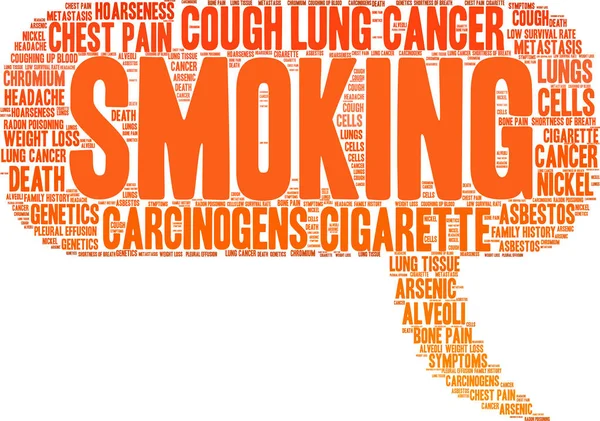
Smoke is produced both when a cigarette is actively puffed (mainstream smoke) and when it smolders between puffs (sidestream smoke). Mainstream smoke is inhaled by the smoker, while sidestream smoke is released from the burning end of the cigarette and contributes significantly to secondhand smoke exposure. The composition and amount of these two types of smoke can vary depending on how the cigarette is smoked and its design features, such as the presence of a filter, the type of tobacco, and the cigarette’s construction.
Sidestream smoke generally contains higher levels of several toxic and carcinogenic compounds—including polycyclic aromatic hydrocarbons (PAHs), nitrosamines, aromatic amines, carbon monoxide, nicotine, ammonia, and certain volatile organic compounds—compared to mainstream smoke. This is due to differences in burning conditions: sidestream smoke is produced at lower temperatures and with less oxygen, resulting in higher alkalinity and water content.
The chemical composition of smoke is also influenced by the physical and chemical properties of the tobacco, cigarette design, and even the method used for machine-smoking analysis.
Some chemicals, such as cyanide, are found in higher concentrations in mainstream smoke, while others, like phenol and cresol, are more abundant in sidestream smoke. Many chemical constituents can be present in both the gas and particulate phases, and their distribution may change as the smoke dissipates and interacts with the environment. National Center For Biotechnology Information 2020
How Does Smoking Cause Bladder Cancer?
Bladder cancer (BC) represents a significant health problem due to the potential morbidity and mortality associated with disease burden, which has remained largely unaltered over time. Bladder cancer is the tenth most common cancer worldwide and is approximately four times more common among men than among women. The main risk factors are tobacco smoking, followed by exposure to carcinogens in the workplace or the environment. Routine screening is not currently recommended, but may be beneficial in individuals at high risk, such as heavy smokers. Primary prevention is extremely important, and smoking cessation represents the most important action for reducing bladder cancer cases and deaths.
Bladder cancer caused by smoking develops through a complex biological process driven by the harmful chemicals found in tobacco smoke. When a person inhales cigarette smoke, carcinogens such as aromatic amines (notably 4-aminobiphenyl), polycyclic aromatic hydrocarbons (PAHs), and benzene enter the bloodstream. These toxic substances are then filtered by the kidneys and become concentrated in the urine, which exposes the lining of the bladder—the urothelium—to prolonged contact with these harmful agents. This exposure is particularly significant because smokers who consume a pack of cigarettes daily have approximately twice the risk of developing bladder cancer compared to lighter smokers.
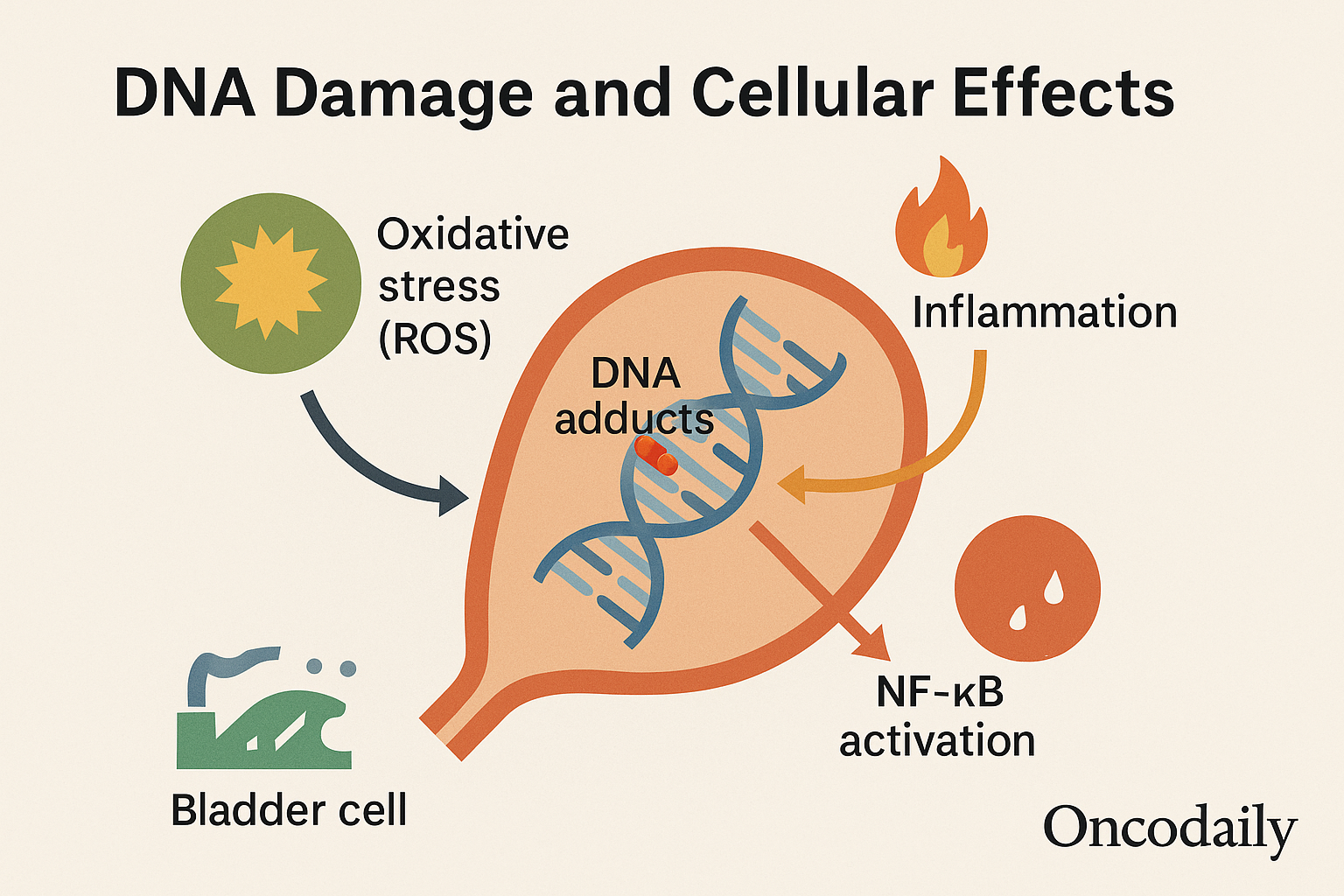
The carcinogens cause direct damage to the DNA of bladder cells by forming DNA adducts, which disrupt essential genes responsible for cell repair and regulation, such as TP53. Additionally, tobacco smoke generates reactive oxygen species (ROS), leading to oxidative stress and chronic inflammation within the bladder tissue. These processes activate cellular pathways like NF-κB, which further promote tumor development.
Moreover, smoking increases the levels of platelet-activating factor (PAF) and its receptor (PAF-R) in bladder cells, facilitating the adhesion of cancer cells to blood vessel walls and promoting metastasis. Research has shown that blocking this interaction can reduce the ability of cancer cells to spread. Chronic exposure to tobacco smoke also triggers epithelial-mesenchymal transition (EMT) through signaling pathways such as Wnt/β-catenin and MAPK, transforming normal bladder cells into invasive and metastatic cancer cells.

Even after quitting smoking, the risk of bladder cancer remains elevated due to accumulated genetic damage, although it decreases by about 25% within the first decade of cessation. Smoking is responsible for approximately half of all bladder cancer cases in both men and women, with current smokers facing up to a fourfold higher risk compared to those who have never smoked. This highlights the critical importance of smoking cessation and the development of targeted treatments to interrupt the carcinogenic processes fueled by tobacco use. Yating Zhan, Frontiers 2024.
The Truth About Smoking and Bladder Cancer: Facts and Risks
Smoking is a major risk factor for bladder cancer. People who smoke are at least 3 times as likely to get bladder cancer as people who don’t. Smoking causes about half of all bladder cancers.
The more you smoke, the higher the risk. Bladder cancer risk increases with smoking duration (the number of years you have smoked) and intensity (the number of cigarettes smoked each day), although duration appears to have a greater effect. Overall, smokers are at least three times more likely than non-smokers to develop bladder cancer. An analysis of data from multiple previously published studies (this is known as a meta-analysis) found that, relative to people who had never smoked, the risk of getting bladder cancer was 3.5 times higher for current smokers, improving to 2 times higher for former smokers (see bar graph).
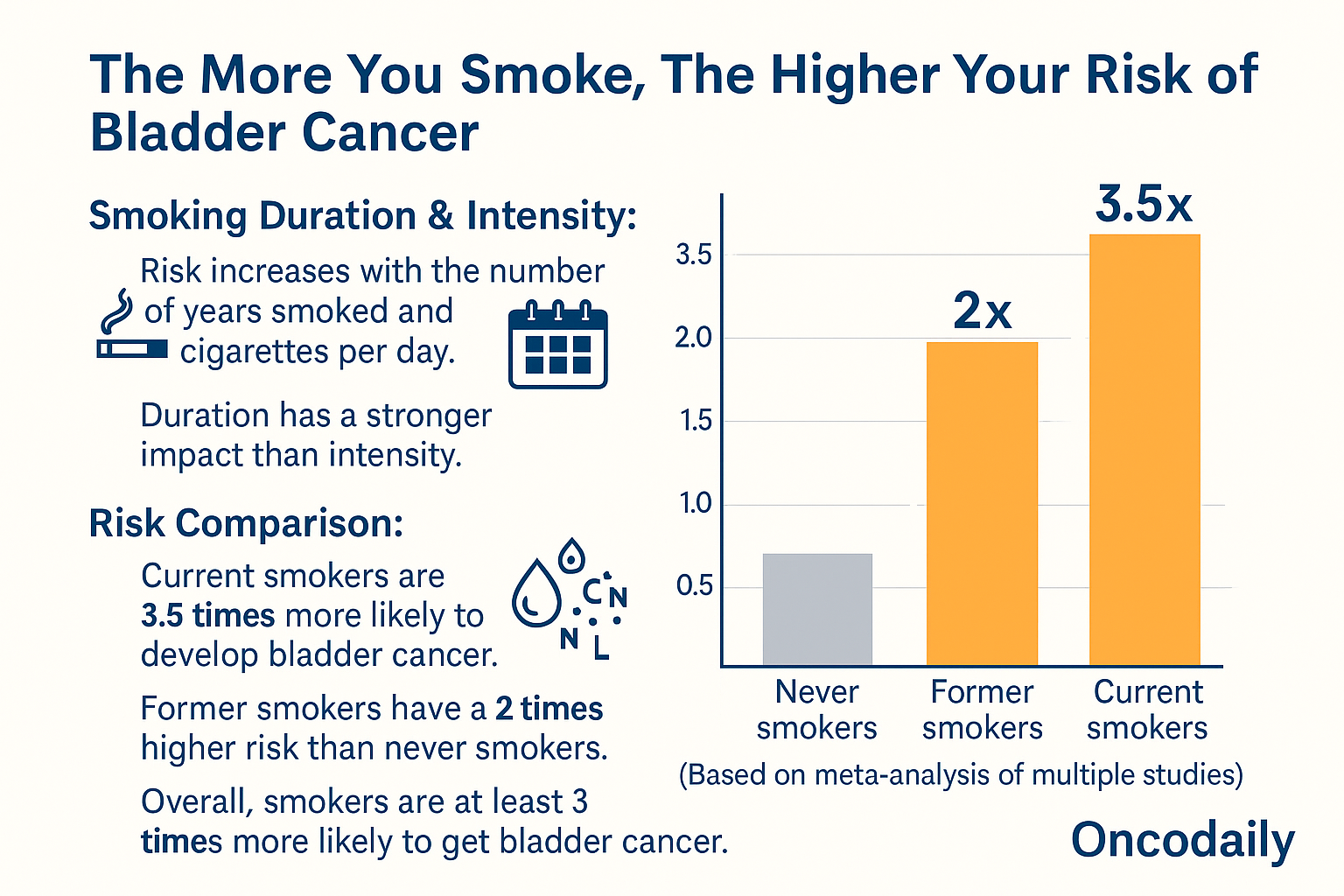
A second meta-analysis found a similar increase in bladder cancer risk for male and female smokers, but a higher risk in European compared with Asian populations. Some genetic variants are also linked to a higher increase in bladder cancer risk for smokers. CxBladder 2025.
Vaping versus Smoking:Does Vaping Cause Cancer?
Though vaping exposes the us er to fewer toxic substances than smoking, it is not harmless: the aerosol inhaled and exhaled during vaping may contain nicotine, heavy metals, and carcinogens.Encouragingly the levels of carcinogens and toxins in e-cigarettes are much lower than in cigarettes, and short-term studies suggest that smokers who switch to vaping do experience reduced exposure to carcinogens. However, it is too soon to know the long-term risks, including whether vaping can cause cancer. Currently there are grounds for concern: 63 toxic or carcinogenic metabolite biomarkers have been identified in the urine of vapers, including several with a strong known link to bladder cancer. Cancer Research UK,2021.
You Can Also Read Does Vaping Cause Lung Cancer? Myths and Facts by Oncodaily

You Can Also Watch NIAGARA Study Insights: Durvalumab & Chemotherapy in Bladder Cancer Treatment | Dr. Petros Grivas by Oncodaily
How To Be A “Healthy Smoker”?
The World Health Organization (WHO) does not support the idea of a “healthy smoker” because smoking is inherently harmful and causes serious health risks. Instead, WHO strongly recommends complete cessation of all tobacco use as the only effective way to reduce smoking-related health problems.
WHO’s clinical treatment guideline for tobacco cessation in adults, released in 2024, emphasizes providing comprehensive support to help tobacco users quit all forms of tobacco, including cigarettes, waterpipes, smokeless tobacco, cigars, roll-your-own tobacco, and heated tobacco products. The guideline notes that over 60% of the world’s 1.25 billion tobacco users want to quit, yet 70% lack access to effective cessation services.
To assist quitting, WHO recommends combining behavioral interventions and pharmacological treatments. Behavioral support includes brief counseling by healthcare providers lasting 30 seconds to 3 minutes, more intensive individual or group counseling, and digital cessation tools like smartphone apps and text messaging programs. Pharmacological treatments endorsed by WHO include varenicline, nicotine replacement therapy (gum, patches), bupropion, and cytisine.
WHO encourages countries to make these treatments affordable or free to improve accessibility, especially in low- and middle-income countries. The guidelines stress that quitting tobacco is the most effective way to improve health and reduce tobacco-related diseases. WHO clearly states that there is no safe level of tobacco smoking; all tobacco use is harmful. The concept of a “healthy smoker” is misleading because smoking damages nearly every organ system. The only way to reduce smoking-related health risks is to quit completely. Tobacco harm reduction strategies focus on helping those who cannot quit entirely to reduce harm but do not endorse continued smoking as safe or healthy.

WHO’s position is that instead of seeking ways to be a “healthy smoker,” individuals should be supported and encouraged to quit smoking using effective behavioral and pharmacological interventions. Tobacco cessation remains the cornerstone of reducing the global burden of tobacco-related diseases.WHO. Clinical treatment guideline for tobacco cessation in adults 2024.
Natural Environment and Smoking: The Connection of Beauty and Evil
The World Health Organization (WHO) has revealed new and extensive information on the severe environmental and human health damage caused by the tobacco industry, calling for urgent steps to hold the industry accountable for the destruction it causes. Each year, tobacco use leads to more than 8 million human deaths and results in the loss of 600 million trees, 200,000 hectares of land, 22 billion tonnes of water, and 84 million tonnes of CO2 emissions globally.
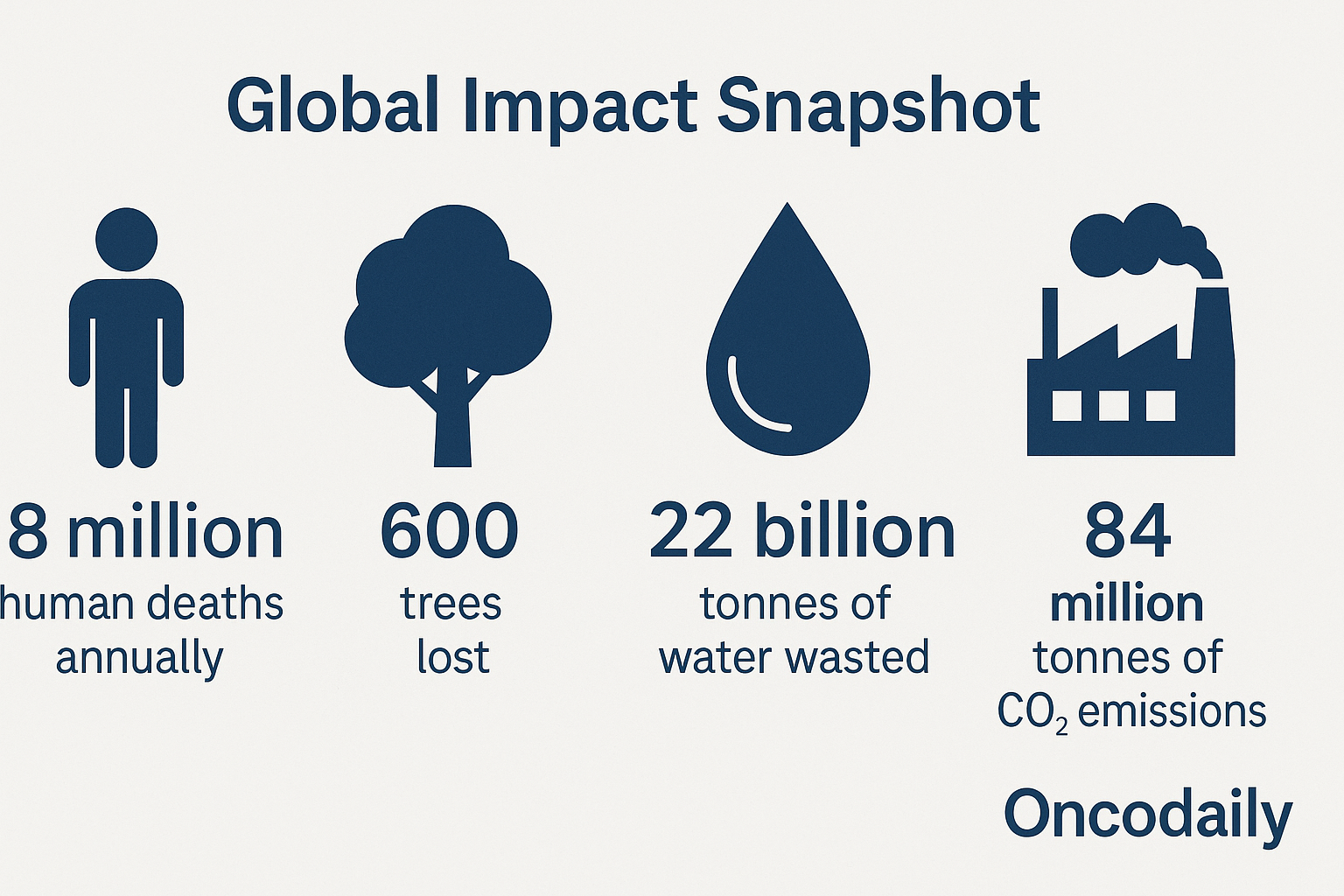
Most tobacco is grown in low- and middle-income countries, where water and farmland are critically needed for food production. Instead, these vital resources are diverted to grow tobacco plants, while increasing amounts of forest land are cleared to make way for tobacco cultivation. The WHO report titled “Tobacco: Poisoning Our Planet” highlights that the tobacco industry’s carbon footprint from production, processing, and transportation is equivalent to one-fifth of the CO2 emissions produced annually by the commercial airline industry, significantly contributing to global warming.WHO. Tobacco:Poisoning our planet 2022.
Tobacco products are the most littered items on the planet. Approximately 4.5 trillion cigarette filters, which contain over 7,000 toxic chemicals, are discarded each year, polluting oceans, rivers, city sidewalks, parks, soil, and beaches. Dr. Ruediger Krech, WHO Director of Health Promotion, emphasized the environmental threat posed by these products and the toxic chemicals they release into ecosystems.
Cigarette filters contain microplastics and represent the second-largest source of plastic pollution worldwide. Products such as cigarettes, smokeless tobacco, and e-cigarettes contribute significantly to the accumulation of plastic waste. Despite tobacco industry marketing claims, there is no scientific evidence that cigarette filters provide any health benefits. WHO calls on policymakers to classify cigarette filters as single-use plastics and consider banning them to protect public health and the environment.

The financial burden of cleaning up tobacco product waste falls on taxpayers rather than the tobacco industry. For example, China spends approximately US$2.6 billion annually on cleanup, India about US$766 million, and both Brazil and Germany spend over US$200 million each. Some countries and cities, including France, Spain, and San Francisco (USA), have implemented “extended producer responsibility” legislation based on the Polluter Pays Principle, which requires the tobacco industry to bear the cost of cleaning up the pollution it creates.
WHO urges more countries and cities to adopt similar measures, support tobacco farmers in transitioning to sustainable crops, implement strong tobacco taxes (potentially including environmental levies), and expand cessation support services to help people quit tobacco.
The report’s methodology for estimating tobacco product waste costs involves a proportional estimation approach: starting with total litter costs for each country, then applying the estimated proportion of litter that is tobacco product waste, weighted by national smoking prevalence.
You Can Also Read Bladder Cancer: Symptoms ,Causes, Stages, Diagnosis and Treatment by Oncodaily

Cultural History of Smoking: Origins and Global Spread
The use of tobacco for smoking has ancient roots, originating in the Americas thousands of years ago. Indigenous peoples cultivated tobacco as early as 6000 BC and used it in religious, medicinal, and social rituals. Smoking was integral to ceremonies, believed to connect participants with the spiritual realm, and was also used for healing purposes. Tobacco Free Life, 2025.
When European explorers arrived in the Americas in the late 15th and early 16th centuries, they encountered tobacco and its various uses. Sailors and traders brought the practice back to Europe, where it quickly gained popularity. Initially, tobacco was valued for its supposed medicinal properties, with some European doctors in the 16th century claiming it could cure a wide range of ailments. The habit spread rapidly across social classes, aided by royal patronage and the novelty of the plant.
Despite early opposition from some leaders—such as King James I of England, who condemned smoking as harmful and offensive—tobacco use flourished. By the 17th century, it was a major global commodity, with plantations established in the Americas to meet growing demand. Smoking became embedded in various cultures, celebrated in art, literature, and social rituals.

Vincent van Gogh, Skull of a Skeleton with Burning Cigarette, Oil on canvas 32 cm × 24.5 cm, 1885-86
The 19th century saw a dramatic rise in cigarette production and consumption, thanks to technological advances like the Bonsack machine, which enabled mass production and made cigarettes affordable to the masses. By the 20th century, smoking was widespread worldwide, becoming a defining social habit before health concerns and regulatory efforts began to curb its prevalence.
In summary, the history of smoking reflects a journey from sacred indigenous rituals to a global social phenomenon, shaped by cultural exchange, industrialization, and shifting perceptions of health and risk. David T. Sweanor,The Editors of Encyclopaedia Britannica 2025.
WORLD NO TOBACCO DAY
World No Tobacco Day (WNTD) is observed every year on May 31st as a global initiative to raise awareness about the dangers of tobacco use and to advocate for effective policies to reduce tobacco consumption worldwide. Established by the World Health Organization (WHO) in 1987, the day highlights the health, environmental, and societal harms caused by tobacco and encourages individuals, governments, and organizations to take action against the tobacco epidemic.
For 2025, WHO has announced the theme “Unmasking the Appeal: Exposing Industry Tactics on Tobacco and Nicotine Products.” This campaign focuses on revealing the strategies used by tobacco and nicotine industries to make their harmful products attractive, especially to young people.
These tactics include the use of flavorings and additives that enhance taste and mask the harshness of tobacco, targeted marketing through sleek designs, attractive packaging, and digital media campaigns, as well as deceptive product designs that resemble sweets or toys to appeal directly to children and adolescents.
Despite progress in tobacco control, the tobacco industry continues to adapt its approaches to attract and retain consumers, undermining public health efforts. The 2025 campaign aims to raise awareness about these tactics, advocate for stronger policies such as bans on flavors that increase product appeal, comprehensive advertising bans including on digital platforms, and regulation of product design and packaging to make tobacco and nicotine products less attractive.

Photo: From Depositphotos
The campaign also highlights concerning trends in youth tobacco use, particularly in the WHO European Region, where data from 2022 show significant gaps in protecting children from electronic cigarettes. Only a few countries have banned all flavors in e-cigarettes or prohibited all forms of advertising and promotion, leaving youth vulnerable to targeted marketing. For example, about 12.5% of adolescents in the region used e-cigarettes in 2022, compared to only 2% of adults, with some countries reporting e-cigarette use among school-aged children two to three times higher than cigarette smoking.
World No Tobacco Day 2025 serves as an opportunity to expose the tobacco industry’s marketing tactics, reduce demand—especially among youth—and reinforce the global commitment to a healthier, tobacco-free future. WHO calls on governments, civil society, and the public to unite in safeguarding the health and well-being of children and young people by strengthening tobacco control policies and supporting cessation efforts. WHO World No Tobacco Day 2025.
Written by Meri Kirakosyan
FAQ
What are the main types of bladder cancer?
The most common type is urothelial carcinoma, but other types include adenocarcinomas and small cell carcinomas. The grade and stage of the tumor are also important for determining treatment options.
Is it a urinary tract infection or bladder cancer?
Bladder cancer and urinary tract infections share many symptoms, so persistent UTI symptoms should be evaluated by a physician to rule out cancer.
What are some key statistics about bladder cancer?
Over 90% of people diagnosed are over age 55, with the average age being 73. Most cases are diagnosed early, and only about 4% are found after the cancer has spread.
Can smoking cause bladder cancer?
Yes, smoking is the number one preventable risk factor for bladder cancer, causing about half of all cases in both men and women.
What is the risk of bladder cancer for smokers?
Smokers are at least three times more likely than non-smokers to develop bladder cancer. The risk increases with both the duration and intensity of smoking.
Can second-hand smoke cause bladder cancer?
Second-hand smoke exposure has been linked to a 22% increase in bladder cancer risk, though the risk is lower than for active smokers.
How does smoking affect the bladder?
Cigarette smoke contains over 7,000 chemicals, including about 70 known carcinogens. These chemicals are filtered through the kidneys and collect in the bladder, exposing the bladder lining to carcinogens for extended periods.
Does quitting smoking reduce bladder cancer risk?
Yes, quitting smoking significantly reduces the risk of bladder cancer and improves outcomes for those already diagnosed.
What carcinogens are found in tobacco smoke?
Tobacco smoke contains over 70 known carcinogens, including acetaldehyde, arsenic, benzene, cadmium, formaldehyde, lead, polycyclic aromatic hydrocarbons (PAHs), tobacco-specific nitrosamines (TSNAs), and radioactive elements like polonium-210.
How do these carcinogens increase cancer risk?
These substances can directly damage DNA, cause mutations, and contribute to the development of cancers such as lung and bladder cancer. Some also cause heart and lung diseases or harm developing fetuses.
How does smoking harm the environment?
Smoking creates massive waste, with 4.5 trillion cigarette butts discarded each year. These butts pollute soil, waterways, and oceans, leaching toxic chemicals into the environment and harming wildlife.
What are the main types of pollution caused by smoking?
Smoking contributes to air pollution (via toxic smoke and thirdhand smoke), water pollution (from chemicals in cigarette butts), and land pollution (through soil contamination and deforestation for tobacco cultivation).
-
Challenging the Status Quo in Colorectal Cancer 2024
December 6-8, 2024
-
ESMO 2024 Congress
September 13-17, 2024
-
ASCO Annual Meeting
May 30 - June 4, 2024
-
Yvonne Award 2024
May 31, 2024
-
OncoThon 2024, Online
Feb. 15, 2024
-
Global Summit on War & Cancer 2023, Online
Dec. 14-16, 2023
